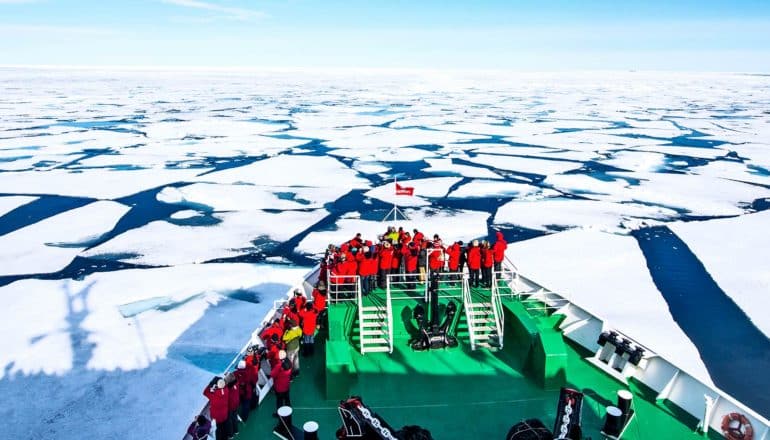
The long-term decline in arctic sea ice stabilized in the last few years due to fluctuations in the tropics, researchers report.
Sea ice coverage in the Arctic Ocean expands and contracts over the course of the year, shrinking to its smallest amount in late summer. This September minimum has itself been steadily decreasing as a result of human-induced climate change.
Curiously however, sea ice coverage has remained relatively stable over the past seven years, despite the continuing warming trend. This follows six years of drastic retreat from 2007 to 2012, and together, these opposing circumstances present a quandary to climate scientists.
Now, climatologists believe they have resolved part of the puzzle. The research appears in the Journal of Climate.

While the two regions may seem far removed, a host of climatic and oceanographic processes link the tropics to the Arctic, according to lead author Ian Baxter, a doctoral student in the geography department at the University of California, Santa Barbara.
Baxter, his advisor, Qinghua Ding, and several collaborators analyzed climate and meteorological data from 1979 through 2017 with the latest Earth system models. From their simulations, the researchers saw a strong link emerge between the Arctic and the tropics in the form of Rossby wave trains.
Rossby waves are huge pressure waves that naturally form within rotating fluids, like the world’s oceans and atmosphere. These global-scale waves travel slowly across the planet, influencing weather and ocean conditions. In the sea, they affect the transition between the warm surface layer and the colder water below. Similar waves in the atmosphere affect the height of the boundary between the troposphere—the lower layer where weather occurs—and the stratosphere.
Sea surface cooling in the tropics between 2007 and 2012 likely made summer temperatures in the Arctic slightly warmer than usual, exacerbating the September sea ice minimum. In contrast, warming in the tropics from 2013 through 2018 appears to have had the opposite effect, keeping the summer sea ice minimum relatively stable in spite of its overall decline.
“In fact, the short period of sea ice melting from 2007 to 2012 is so dramatic that it could explain a large portion of the entire melting in the past two decades,” Ding explained.
The oceans undergo natural, periodic variations such as the El Niño Southern Oscillation and the Interdecadal Pacific Oscillation. Rossby waves could carry the effects of these oscillations to the Arctic, where they would affect the extent of the sea ice. So, from 2007 through 2012, the oscillation amplified the overall decline, while from 2013 through 2018, the variability masked it, stabilizing the extent of the ice.
Unfortunately, this natural variation won’t stop the overall decline in arctic sea ice. “In fact, it could even make the situation worse at some point,” Baxter says. We may again see a dramatic decrease in sea ice once the oscillation swings the other way.
Studies like this will help improve climate models in the future. “Sea ice is an important aspect of the climate system,” says Baxter, “so hopefully our study will improve the simulation of sea ice.”
Ding agrees, adding, “in the near future, we should keep an eye on the tropics if we want to better predict conditions in the Arctic.”
This study was supported by NOAA’s Climate Program Office and the National Science Foundation’s Polar Programs.
Source: UC Santa Barbara
The post ‘Waves’ from the tropics slowed Arctic sea ice melt appeared first on Futurity.
from Futurity https://ift.tt/2JdYw2w
No comments:
Post a Comment